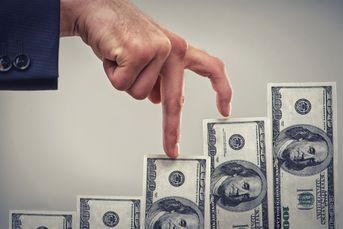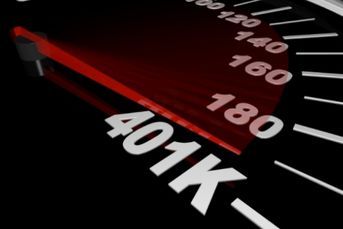Fears about inflation inflated, Gundlach says

Bond fund manager sees little risk of major price hikes; other experts agree
Bond investors are siding with Federal Reserve Chairman Ben S. Bernanke when he says that crude oil above $100 a barrel and record high food prices may only cause a temporary jump in the inflation rate.
Since reaching a 10-month high in December, a bond market measure of inflation expectations the Fed uses to help determine monetary policy has declined to 2.97 percent from 3.28 percent. The five-year five-year forward breakeven rate projects what the rate of consumer price increases may be beginning in 2016, smoothing blips in inflation expectations from swings in oil prices and other temporary events.
The rate suggests that Bernanke can afford to keep interest rates at record lows to foster the American economy while his counterparts at the European Central Bank say they may need to boost borrowing costs for the first time since 2008 to tame inflation even as growth lags behind the U.S.
“I just don’t see the inflation case being told by the markets,” said Jeffrey Gundlach, who runs DoubleLine Capital LP in Los Angeles and was a finalist in 2009 for Morningstar’s fixed-income manager of the decade. “Commodity price increases are not inflationary for the short-term. Without wage growth you can’t get inflation.”
Yields May Fall
Gundlach, whose $5.3 billion DoubleLine Total Return Bond Fund has returned 19 percent since opening last April, also said in New York on March 10 that Treasury 10-year yields may fall to 3 percent from 3.41 percent last week as rising raw material prices restrain growth. The 10-year note yielded 3.40 percent as of 11:40 a.m. in Tokyo. The Labor Department said March 4 that average hourly earnings for Americans were unchanged in February.
The five-year five-year rate is signaling inflation will remain benign over the long-term even as the gap between Treasury yields and five-year U.S. government debt tied to the consumer price index reaches the widest in almost two years.
The difference, known as the break-even rate, climbed to 2.31 percent on March 8, a day after oil reached a 29-month high of $106.95 a barrel on concern uprisings in North Africa and the Middle East will disrupt supply. The rate dropped to 2.20 percent on March 11 as crude fell after Japan’s strongest earthquake on record shut refineries in the world’s third- largest oil-consuming country.
While JPMorgan Chase & Co. recommends investors buy Treasury Inflation Protected Securities, or TIPS, it forecasts only a “modest and temporary” rise in consumer prices minus food and energy costs through the first quarter because the U.S. has become less energy dependent than it was in the 1970s.
Forward Rate
The measure that the central bank prefers is derived from yields on five- and 10-year TIPS and Treasuries. Forwards are calculated by using yields at different maturities to extract where they imply rates for a particular maturity will be in the future. The rate, which averaged 2.66 percent back through 1999, is up from last year’s low of 2.18 percent on Aug. 24.
Brian Sack, who was responsible for monetary and financial market analysis at the Federal Reserve Board in Washington in 2003 and 2004, and his colleagues persuaded the central bank to use the five-year five-year measure accuracy. The Fed monitors inflation expectations because consumers tend to seek higher wages and businesses raise product prices when they believe inflation is accelerating.
Bernanke Testimony
Bernanke said in Congressional testimony on March 1 that past history of bouts of oil and commodity prices increases combined with stable labor costs suggests a “temporary and relatively modest increase in U.S. consumer price inflation” and pledged to keep borrowing costs low. Fed officials meet tomorrow to set monetary policy.
While prices may be contained now, the concern is that the Fed’s zero to 0.25 percent interest rates and economic stimulus measures will spark inflation. In November, the central bank began buying $600 billion of Treasuries in a second round of quantitative easing that will run through June.
“The market is extremely worried about inflation,” said Keith Price, head of U.S. inflation trading in New York at BNP Paribas SA. “The majority thought is that the other shoe will have to drop at some point given the Fed’s printing of money. This has been compounded by what is going on globally in North Africa and the Middle East.”
The Fed has sought to boost inflation since August, when Bernanke signaled the central bank might resume buying securities to inject cash into the financial system and prevent a general decline in prices, which can paralyze an economy. Core consumer prices rose 0.6 percent in October from a year earlier, the smallest gain since records began in 1958.
Inflation Targets
“Core inflation is not yet high by any stretch relative to the Fed’s goals of it being somewhere near 2 percent,” said Neal Soss, chief economist at Credit Suisse Holdings USA Inc. in New York and a Fed adviser under former Chairman Paul Volcker. “Bernanke wanted inflation to move up a bit higher and it has. Increases in oil or any item per se does not create a risk of inflation in a generic sort of way.”
Unlike Bernanke, European Central Bank officials have expressed concern over the jump in prices of oil, commodities and food. ECB President Jean-Claude Trichet said March 3 that policy makers may raise their benchmark rate from a record low of 1 percent as soon as April.
‘More Concerned’
“The ECB and the Bank of England are becoming more concerned about headline inflation,” Michael Pond, co-head of U.S. rate strategy in New York at Barclays Plc, said in a radio interview March 8 on “Bloomberg Surveillance” with Tom Keene. “The Fed is in a very different mindset and focused on core inflation, which they can control. And the measure that they look at, the core personal consumption expenditure index, has remained below 1 percent on a year-over-year basis.”
The Commerce Department’s PCE index excluding food and energy rose 0.8 percent in January from a year earlier, after increasing 0.7 percent in December for the smallest advance since records began in 1959. The index, which the Fed made their primary focus in 2000, is an indicator of the average increase in prices for all domestic personal consumption.
Surges in oil prices may pose a bigger threat to growth because consumers suffer from a sudden drop in purchasing power. An 85 percent to 90 percent increase in oil over a year was followed by U.S. recessions in 1975, 1980, 1990, 2000 and 2008, according to Morgan Stanley.
Crude Falls
Crude for April delivery fell 1.6 percent today to $99.51 a barrel on the New York Mercantile Exchange. Prices are up 22 percent from a year ago. Nouriel Roubini, the New York University economist who predicted the global financial crisis, said in Dubai on March 8 that an increase in oil prices to $140 a barrel will cause some advanced economies to slide back into recession and likely slow the pace of U.S. growth.
A Fed Bank of Cleveland model, which uses nominal interest rates, inflation swaps and surveys data, shows the public expects inflation of less than 2 percent on average in the next decade, according to the regional bank’s website.
“The oil shock will push inflation up only temporarily and retard growth,” said Michael Darda, chief economist and market strategist for MKM Partners in Stamford, Connecticut. “For all the hand wringing out there, the Fed is basically getting it right.”
–Bloomberg News–
Learn more about reprints and licensing for this article.






